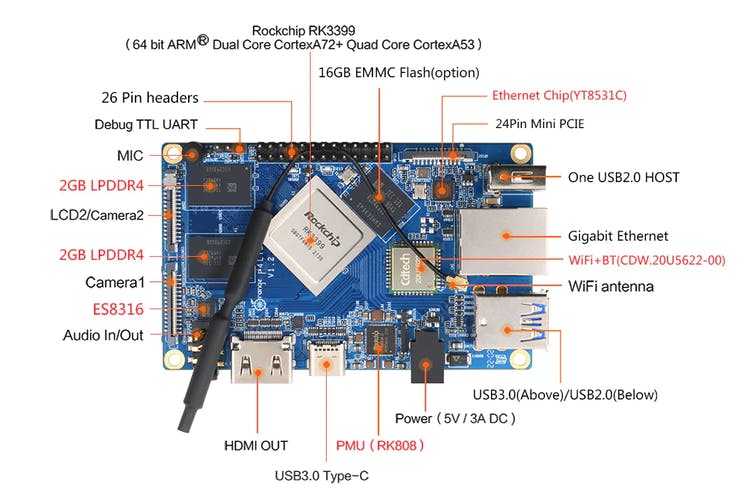To work around ongoing component shortages, the new OrangePi 4 LTS SBC swaps out a few parts.
Shenzhen Xunlong, the company behind the Orange Pi line of
single-board computers, has announced the Orange Pi 4 LTS, which offers many of
the same features as the Orange Pi 4 but uses more widely accessible
components.
The newest member of the Orange Pi family, which was born
out of the success of the Raspberry Pi line of single-board computers, has some
outstanding specs in a small package. The Rockchip RK3399, with two
high-performance Arm Cortex-A72 cores and four lower-power Cortex-A53 cores
with a maximum speed of 1.8GHz and an Arm Mali-T860 graphics processor, lies at
the heart of the board.
Orange Pi has also included 4GB of LPDDR4 RAM, a 16GB eMMC on-board storage option that can be expanded via microSD, gigabit Ethernet, and a combined Wi-Fi and Bluetooth 5.0 radio with an external antenna. There are twin MIPI DSI, two USB 2.0 ports, one USB 3.0 port, and a USB 3.0 Type-C port, as well as two MIPI CSI camera connections, and HDMI 2.0a and DisplayPort 1.2-over-USB Type-C video outputs supporting 4k video at 60Hz. A mini-PCI Express (mPCIe) connection is also available for hardware expansion.
In a nutshell, it's nearly identical to the Orange Pi 4, but
with just 4GB of RAM rather than up to 8GB. It's almost there, but it's not
quite there: The suffix "LTS," which stands for "Long Term
Support," suggests that the board was created to address component
shortages for the original Orange Pi 4.
As a result, the previously required 16GB eMMC chip has been
made optional, the AP6256 radio module has been replaced with a CDW 20U5622,
the Realtek RTL8211E Ethernet module has been replaced with a YT8531C, and the
40-pin general-purpose input/output (GPIO) header has been replaced with a
26-pin version based on the first Raspberry Pi models.
Apart from these differences, the performance and
compatibility of the Orange Pi 4 and Orange Pi 4 LTS should be equal, with the
same customised Android, Debian, and Ubuntu operating system images.
The board, together with an optional 16GB eMMC chip, available for $72.90 plus $4.05
shipping; the company has verified that parts would be dispatched early next
week.
Official Website: Orange Pi


















.png)



